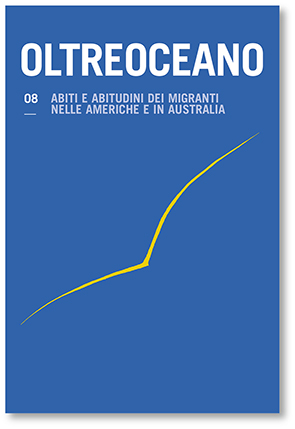Bordadoras de sueños e industria turística en Quintana Roo, México
Keywords:
artesanías, turismo, identidades, empoderamientoAbstract
El ensayo aborda el significado de la indumentaria para las bordadoras mayas de hipiles en Quintana Roo: signo de pertenencia étnica y orgullo ancestral, manifestación de malestar por la discriminación y racismo de las mujeres mayas en contextos urbanos.
Handicrafts and Artisans in the global world, paradoxes, transactions, market and cultural resistance in tourism context. The case of Quintana Roo, Mexico
In this analysis will be talked Quintana Roo Mayan women weavers as a sign of their ethnic belonging and ancestral pride. In addition, it will be discussed at the same time the marketing and expropriation of their products. In the same way, it will be talked about the racism and discrimination that Mayan women suffer in the urban contexts.
Ricamatrici di sogni e l'industria del turismo a Quintana Roo, Messico
Il saggio affronta il significato degli indumenti per le ricamatrici mayas de hipiles a Quintana Roo: segno di appartenenza etnica e d’orgollo ancestrale, manifestazione di disagio per la discriminazione e per il razzismo di cui sono vittime le donne mayas nei contesti urbani.
Downloads
References
Aguirre, I. (2003): Participación política y social de las mujeres indígenas: el caso de Una lideresatradicional. Cuicuilco. Revista de la Escuela Nacional de Antropología e Historia. Nueva Época, 10, 27, pp. 105-130.
Bonfil Batalla, G. (2008): México Profundo. Una civilización negada. México: Random House Mondadori.
Charbonnier, G. & Lévi-Strauss, C. (1975): Arte, lengua, etnología. México: Siglo XXI.
Duarte, A. R. & Wammack, B. (2010): Bordadoras mayas en el camino a Chichén Itzá: turismo, identidad y microcréditos. In A. R. Duarte, & B. Wammack (Eds.), Género en la época de la globalización. Miradas desde el mundo maya (pp. 99-132). Mexico: Plaza y Valdes.
Duterme, B. (2008): Expansión del turismo internacional: ganadores y perdedores. En A. Castellanos Guerrero & J.A. Machuca R. (Eds.), Turismo, identidades y exclusión (pp. 11-29). México: UAM/Casa Juan Pablos.
Escalona, C. (2001): La producción artesanal en los grupos domésticos de X-Pichil. En P. Bonfil & B. Suarez (Eds.), De la tradición al Mercado. Microempresas de mujeres artesanas (pp. 71-136). México: GIMTRAP.
Gimenez, G. (2005): La concepción simbólica de la cultura. In G. Gimenez, Teoría y análisis de la cultura. Recuperado de http://www.paginasprodigy.com/peimber/cultura.pdf
Marín, G. (2008): Territorio de resistencia, integración mercantil y producción del espacio turístico en Quintana Roo: trayectorias y transformaciones del Mundo maya. En A. Castellanos Guerrero & J. A. Machuca Ramírez (Eds.), Turismo, identidades y exclusión (pp. 97-141). México: UAM & Casa Juan Pablos.
Novelo, V. (1976): Artesanía y Capitalismo en México. México: SEP-INAH.
Novelo, V. (1976): El arte popular mexicano. Recuperado de http://www.fusda.org/Revista25-26/Revista25-626EL%20ARTE%20POPULAR%20MEXICANO.pdf
Novelo, V. (2002): Ser indio, artista y artesano en México. Espiral, Estudios sobre Estado y Sociedad, IX, 25, pp. 165-178.
Quintal, J. & Chan Cob, J. (2011): La participación política en Quintana Roo. Origen y desarrollo, 1902-1981. México: IEQROO.
Salinas Urquieta, M.E. (2009): Violencia, negocios y subjetividades en la frontera sur de México. En M. Buenrrostro & A. Higuera (Eds.), Temas y Contextos (pp. 163-186). México: UQROO/Plaza y Valdes.
Downloads
Published
How to Cite
Issue
Section
License

This work is licensed under a Creative Commons Attribution-NonCommercial-ShareAlike 4.0 International License.
The authors undertake to comply with the following conditions, which are considered accepted at the time of submission of their contributions.
The sending of a text implies that it is unpublished and not submitted to be published elsewhere.
1. If accepted, the author shall confer on the publisher the right to publish and distribute it both in paper form and in the online electronic edition. The published articles will be downloadable and made available in open access.
2. Provided that it correctly indicates that the first publication took place in the journal Oltreoceano. Rivista sulle migrazioni the author has the right to: a) reproduce the article in separate extracts or collected in a volume; b) publish the article on their personal website or teaching site provided that these sites are of a non-commercial nature; c) deposit the article in online archives of a non-commercial nature, linked to the institution they belong to or as part of projects for the non-commercial dissemination and open access of scientific works.
The use of contributions by third parties, for commercial or otherwise unauthorized purposes, is not allowed. The publisher declines all responsibility for the unauthorized use of the material published in the journal.












